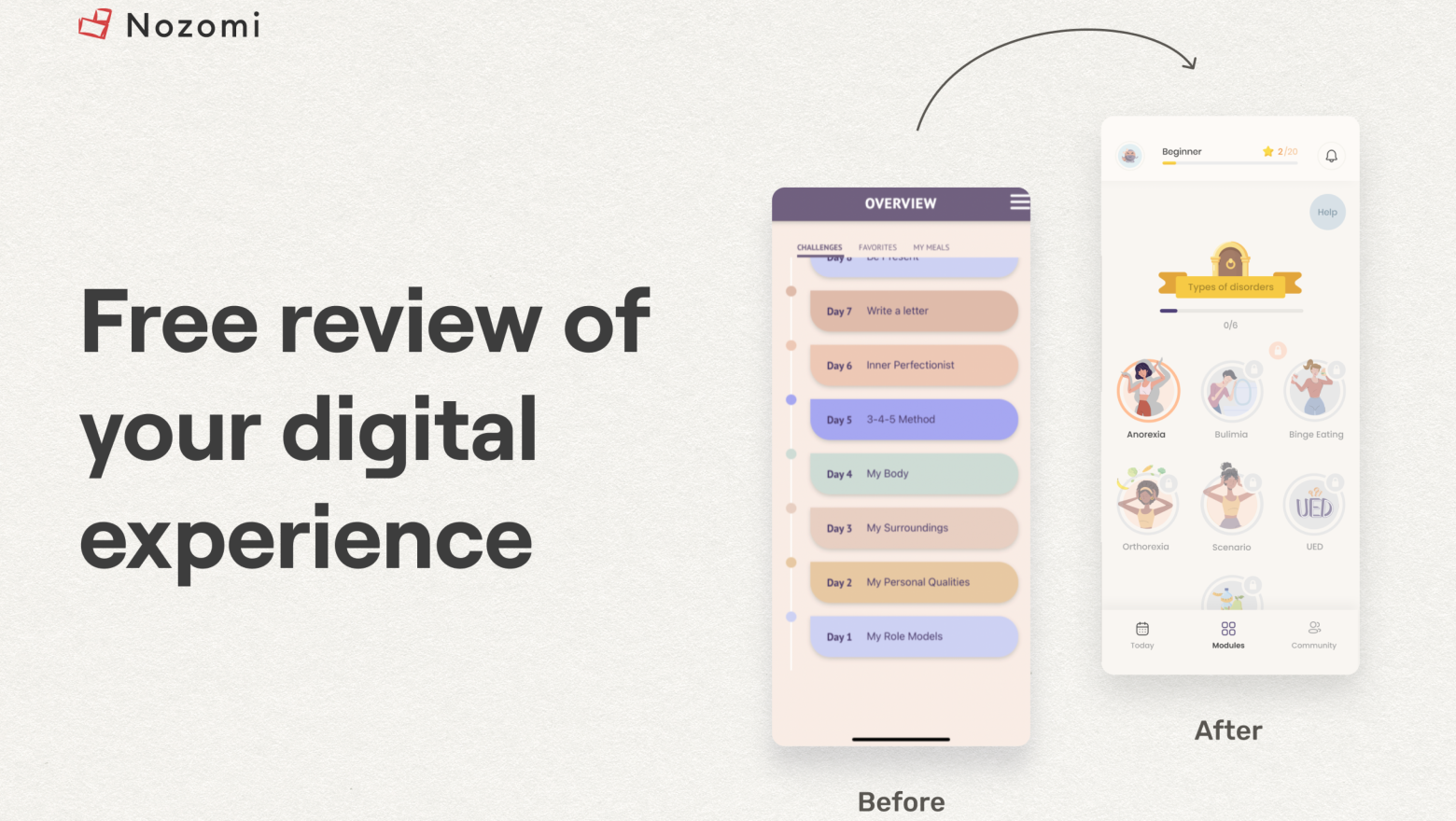First and foremost, let’s state the most important thing: a product must always provide value. What we discuss next is essentially an enhancement to increase effectiveness and real competitiveness.
In other words, if your product lacks value for your target audience, no engagement techniques will help. However, if everything is good, then it’s time to stand out from the competition 🙂
Engagement can be thought of as a factor that strengthens or weakens the relationship between the digital health intervention and the probability of patient outcomes:
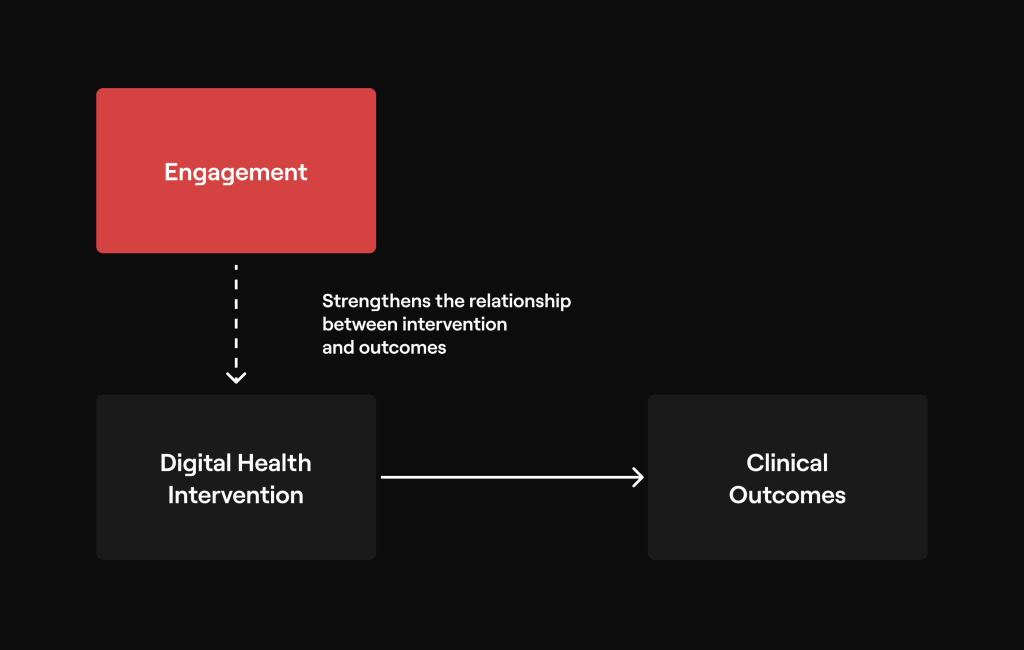
diagram based on Perski & Colleague’s 2017 review
But how can it be improved? We suggest looking at these methods and even slightly revising and challenging their conventional use.
Engagement methods consist of three elements:
1. Foundation: UX and UI (bottom level)
2. Features whose effectiveness has long been proven (middle level)
3. Experimental features (top level)
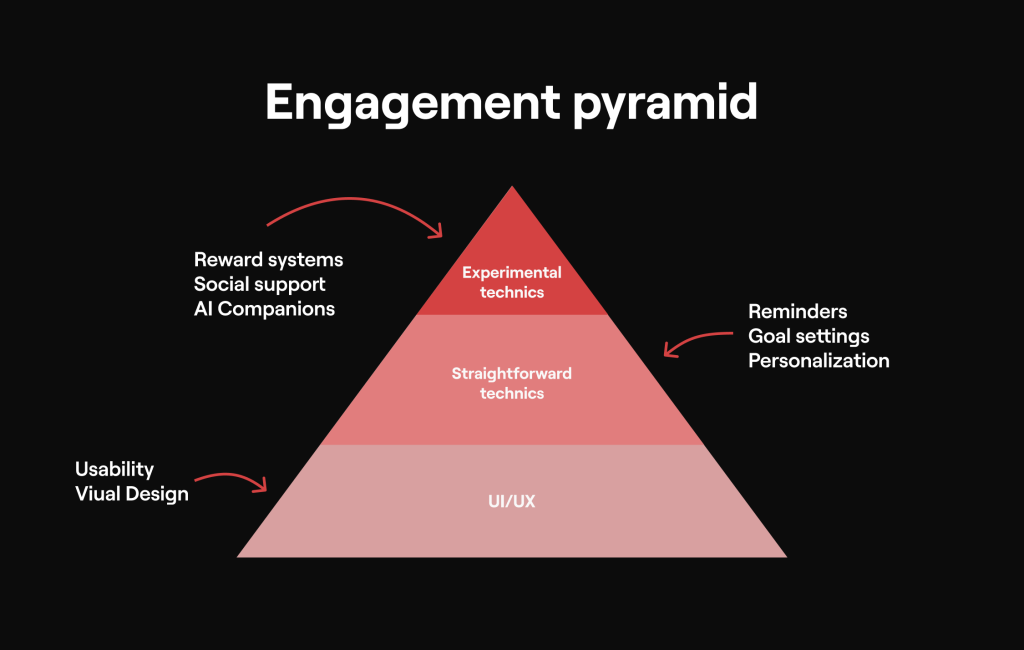
The document shows:
1. Which specific metric each feature has influenced and how the company achieved growth.
2. Concrete examples to draw inspiration from. Among the list are popular brands such as Flo, Calm, MyFitnessPal.
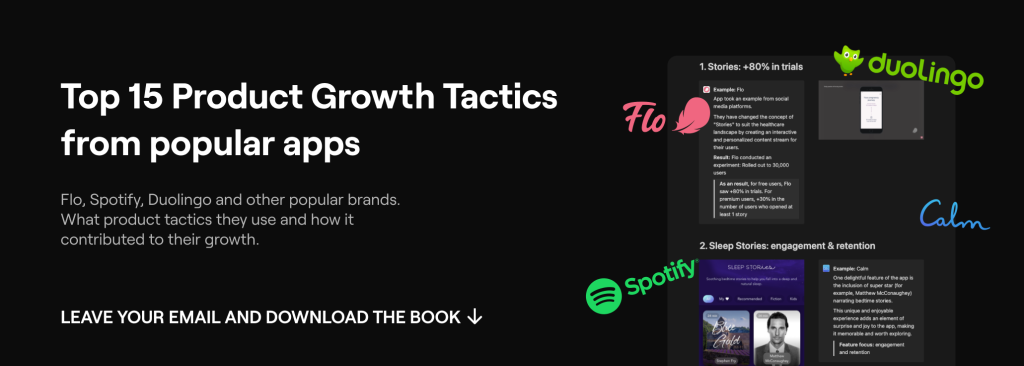
Top 15 Product Tactics that use popular Digital Health Brands for Growth
I. Foundation: this is what should be in the application (bottom level)
1. User Experience (UX)
In the realm of digital health, usability is all about how smoothly and naturally interventions flow. Think of it as a potential roadblock to engagement rather than a direct booster.
Some recent studies compared engagement levels across various web-based health apps and found either no real link or even a negative one between usability and engagement. Sounds counterintuitive, right? Well, it turns out that while super simple, easy-to-use apps might score high on usability, they can still fall flat in keeping users interested.
Usability alone won’t keep users engaged; it’s necessary but not enough. Take interactivity, for example. It’s great for pulling users into the digital world, but if the interface is clunky or confusing (poor usability), it kicks them right back out.
Especially in digital health, where users might have different cognitive or physical needs, usability is crucial. For folks dealing with conditions like depression, where focus and motivation can be tough, intuitive design can make or break their engagement.
2. User Interface (UI)
Research indicates that the visual appeal of health app interfaces plays a crucial role in engaging users. Aesthetic design not only attracts attention but also enhances comprehension and emotional response.
Recent studies have shown that mobile apps benefit more from superior visual design compared to web-based platforms, although the reasons behind this discrepancy remain unclear.
Nonetheless, as digital health interventions evolve, both usability and visual design continue to be key factors in ensuring user engagement and effectiveness.
Then let’s go down the pyramid…
II. Features whose effectiveness has long been proven (middle level)
1. User Control
Empowerment in digital health interventions refers to users’ autonomy and control over their experience. While offering users control may seem like a no-brainer, it’s not always straightforward.
Research suggests that while some autonomy can boost engagement by making users feel more empowered, too much freedom can actually backfire. Studies have shown that overly complex or open-ended interfaces can overwhelm users, leading to disengagement.
It’s like that feeling you get when you’re faced with too many options at a buffet and end up not enjoying any of them! The key takeaway here is to strike a balance between giving users a sense of control while gently guiding them towards their goals.
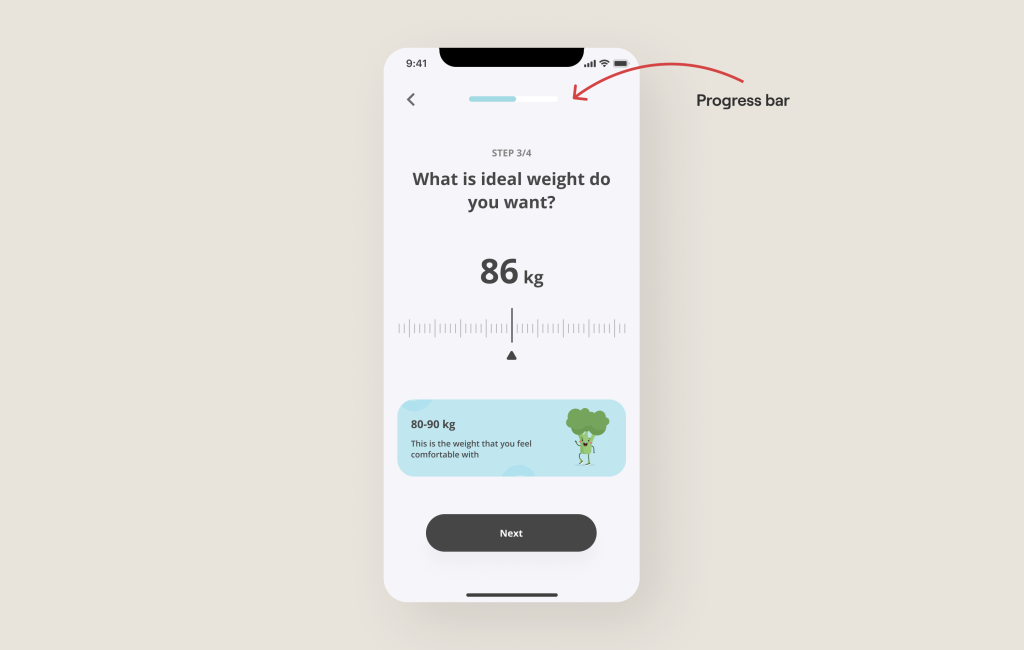
2. Personalization
Personalization, or tailoring, involves customizing interventions to fit users’ unique characteristics, preferences, and needs.
41% of patients stop using an app due to poor engagement, and 38% cite lack of personalization and patient understanding as reasons to consider switching apps and services.
Tailored interventions have been shown to be more effective in improving health outcomes compared to one-size-fits-all approaches. While human-delivered interventions can offer highly personalized support, advancements in technology are making it possible for digital interventions to achieve similar levels of customization.
For example, Depending on patients’ ages, illnesses, and fitness levels, there might be subdivisions within the patient group.
For young, healthy individuals, personalized training schedules and dietary advice could be offered to help them achieve their goals. For older patients, emphasis might be on fall prevention and mobility exercises.
For example, when we developed the Longevity app for Sumu (a Swiss company that helps people increase longevity through personalized coaching), we provided extensive options for personalized nutrition and exercise goals.
Furthermore, the initial personalization was based on DNA tests, making patient engagement and experience in healthcare particularly profound.
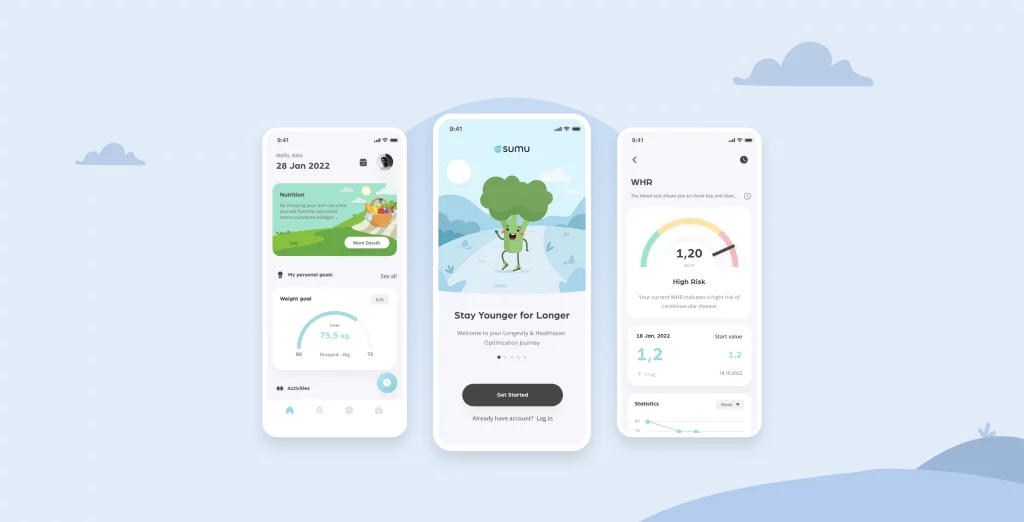
Learn case study how we created an app with biomarker analysis
3. Storytelling
Narratives are powerful tools for engagement, as they captivate users’ attention and make information more memorable and relatable. Humans have an innate affinity for storytelling, which is why narratives are such a potent force in digital health interventions.
Incorporating storytelling elements, such as character arcs or plot twists, can transform an intervention from mundane to memorable. Just think about your favorite video game or movie – chances are, it’s the story that keeps you hooked!
For example, in Moksha we made an introduction to tell the user about the features of the application (and where to find them!) through a story.
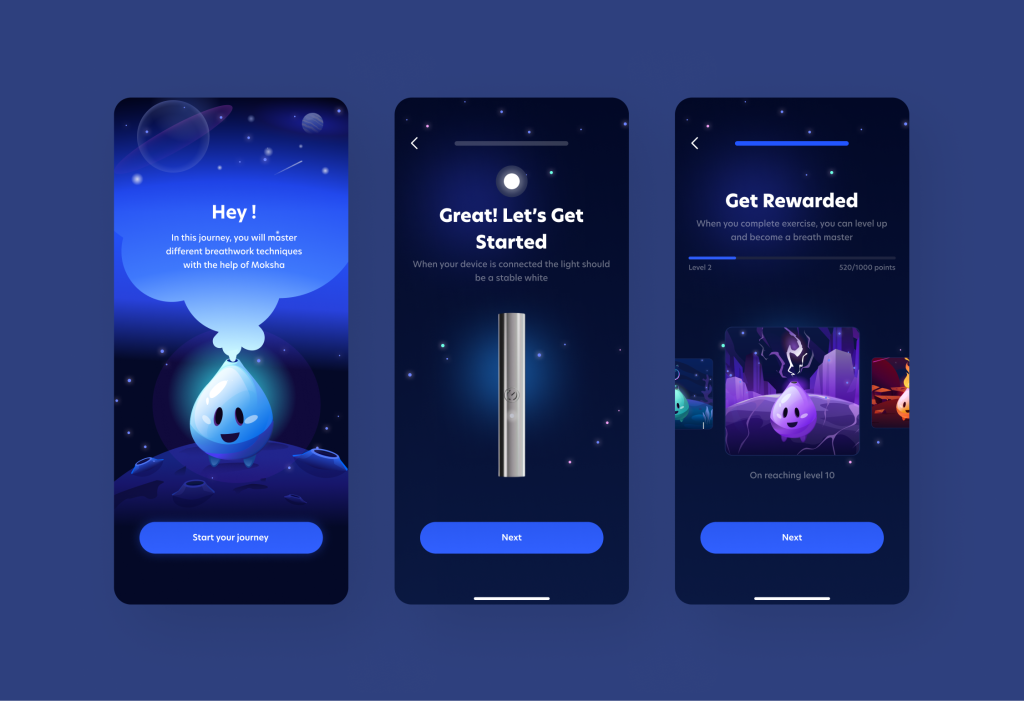
Learn case study how we made story-oriented mental health app
This method reduces cognitive load for the user, and vivid images aid in better memorization of the information. Therefore, it is better to do this using a mascot like Moksha.
4. Goal setting
Goal setting is a tried-and-true method for behavior change, both in face-to-face and digital interventions. Studies have found that setting clear, achievable goals can significantly improve engagement and outcomes.
Whether it’s aiming for a certain number of steps per day or tracking daily calorie intake, goals provide users with a sense of purpose and motivation.
However, it’s important to ensure that goals are realistic and tailored to each user’s abilities and preferences.
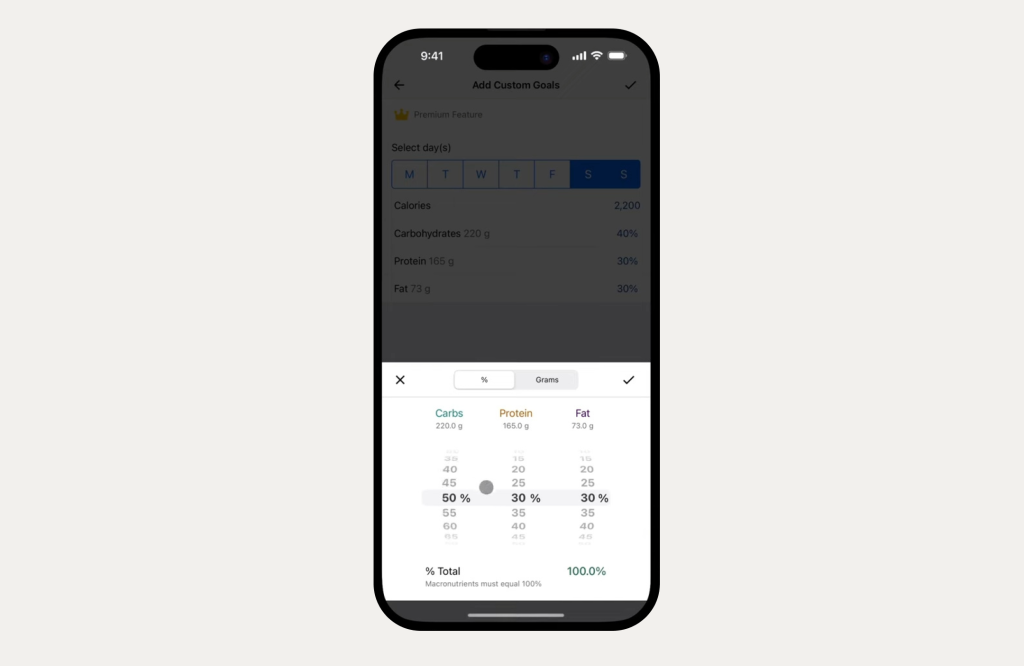
A perfect example: MyFitnessPal
5. Interactivity
Interactivity, or the ability for users to actively engage with an intervention, is essential for sustaining user interest and participation. From interactive quizzes to immersive simulations, incorporating interactive elements can make interventions more engaging and enjoyable.
Research has shown that interactive content is not only more engaging but also more persuasive, making it a valuable tool for digital health interventions.
For example, in a meditation app Microshift we decided to teach meditation in an unconventional way.
Firstly, the meditation format in this app involves focusing the eyes on a circle and listening/reading instructions:
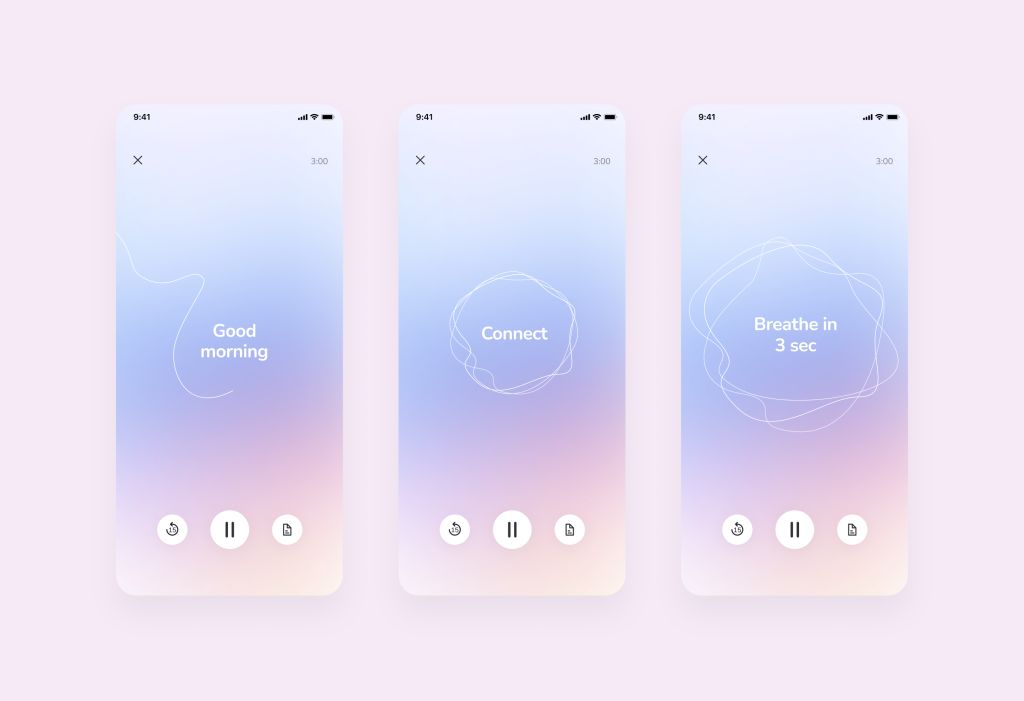
Learn case study how we built the app in 2 months
Secondly, besides this educational aspect, users can share their successes with the community and receive feedback:
6. Reminders
Reminders, whether in the form of push notifications or emails, are effective nudges to prompt users to engage with an intervention. They constitute a fundamental aspect of the widely recognized Fogg Behavior Model.

Image Credits: The Fogg Behavior Model
According to this model, three elements must come together for behavior change to take place: motivation, ability, and a prompt. In other words, even if a person possesses adequate motivation and capability, they still require a prompt to encourage engagement in the desired behavior.
So studies have shown that well-timed reminders can significantly increase engagement and efficacy.
However, it’s essential to use reminders judiciously to avoid overwhelming users. Personalized, relevant reminders are more likely to resonate with users and encourage sustained engagement over time.
For example, you can conduct specific daily sessions with the patient, but even in such cases, it’s important to notify users, just to be on the safe side.
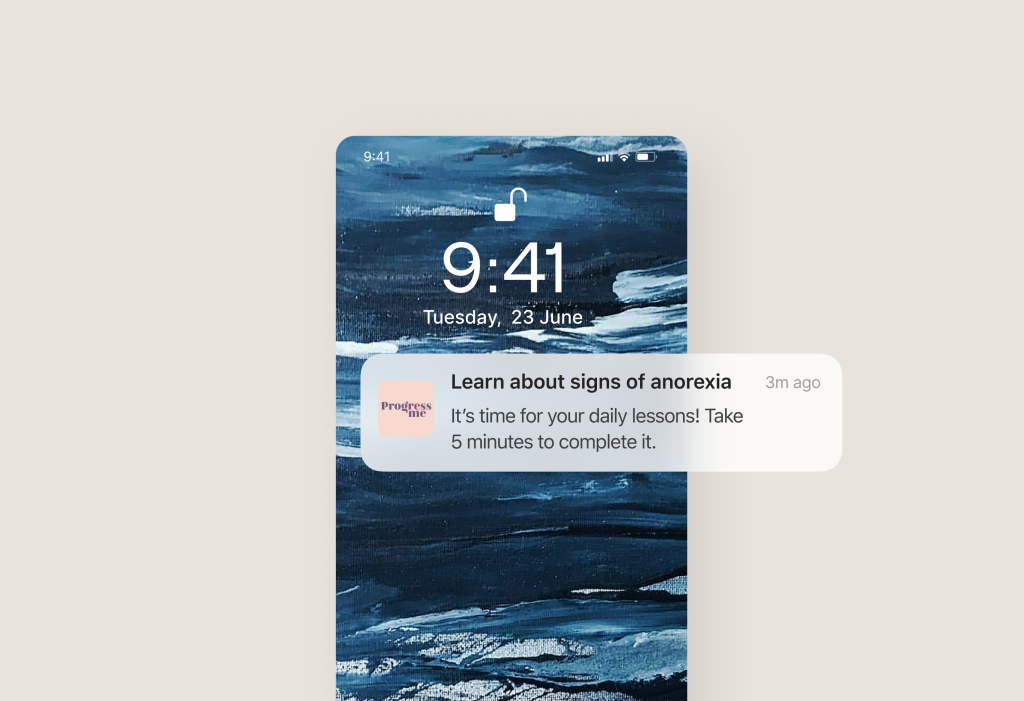
III. Experimental features (top level)
1. Reward Systems
Rewards are powerful motivators for behavior change, but they need to be used thoughtfully to avoid unintended consequences. Extrinsic rewards, such as badges or points, can incentivize users to engage with an intervention, but they may also undermine intrinsic motivation in the long run.
Striking the right balance between extrinsic and intrinsic rewards is key to creating an effective reward system that drives engagement without diminishing long-term behavior change.
For instance, achieving a consistent week-long fruit intake goal signifies a therapeutic breakthrough, earning patients recognition through badges. These badges serve as positive reinforcements, driving patients to pursue additional achievements and sustain their daily fruit intake.
That’s where the concept of progress and reward systems comes into play.
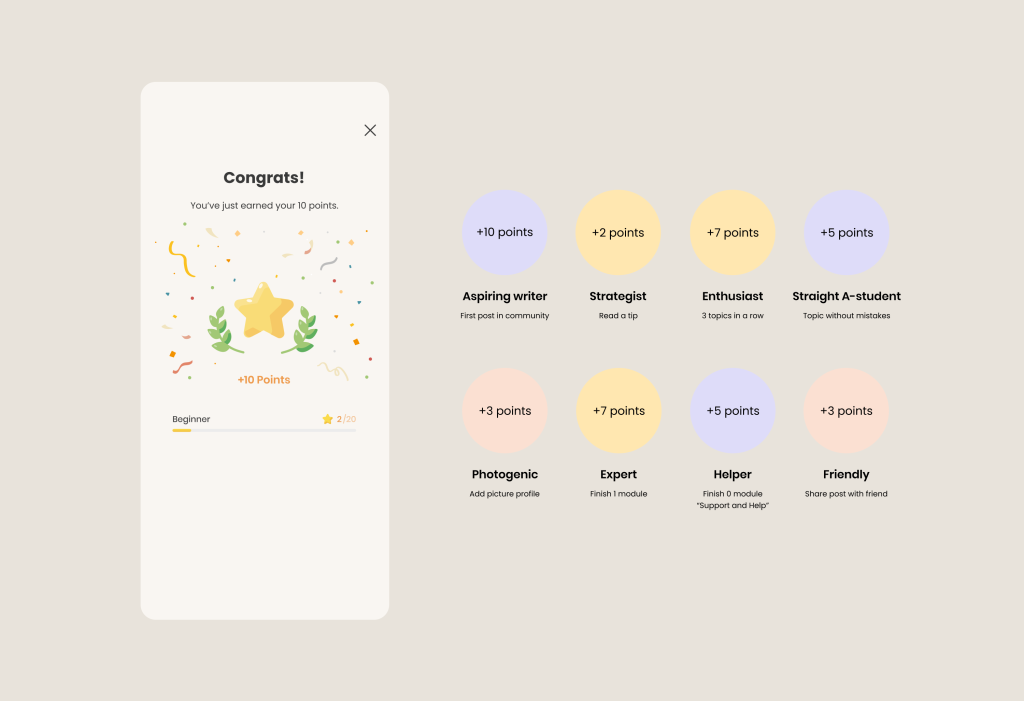
Example from our case study with ProgressMe
We’re referring to the idea that a user wouldn’t want to give up their accumulated progress, which can be lost. They’ve invested a lot of time and can see all the efforts put in to achieve a high level/rank, and they might even compare themselves to other users (which undoubtedly fills the patient with pride).
2. Self-Monitoring
Self-monitoring involves tracking and monitoring one’s behavior, a proven strategy for promoting behavior change. Whether it’s logging daily activity or recording food intake, self-monitoring encourages users to become more aware of their habits and progress towards their goals.
Integrating self-monitoring features into digital interventions can enhance engagement and accountability, driving positive behavior change. A recent study discovered a significant correlation between self-monitoring and heightened engagement.
In practice, we can demonstrate the mental health AI app from Sensae, where we went further and combined self-monitoring with patient monitoring:
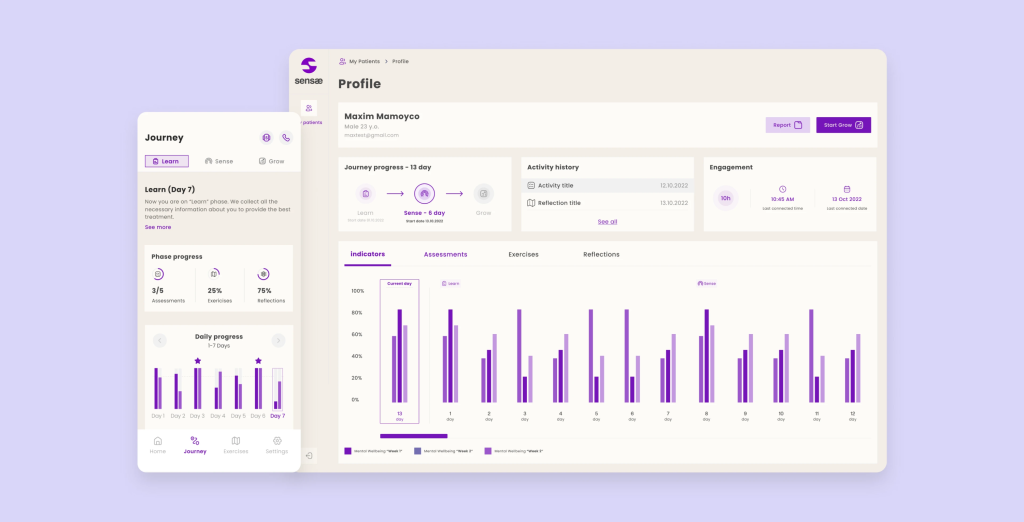
Learn how we’ve built AI health platform for Danish company
Specialists can also track the patient’s health and make adjustments, which doubly enhances engagement.
3. Social Support
Social support features leverage the power of social influence to motivate users and foster a sense of community. Whether it’s sharing achievements with friends or participating in group challenges, social support can enhance engagement and adherence to interventions.
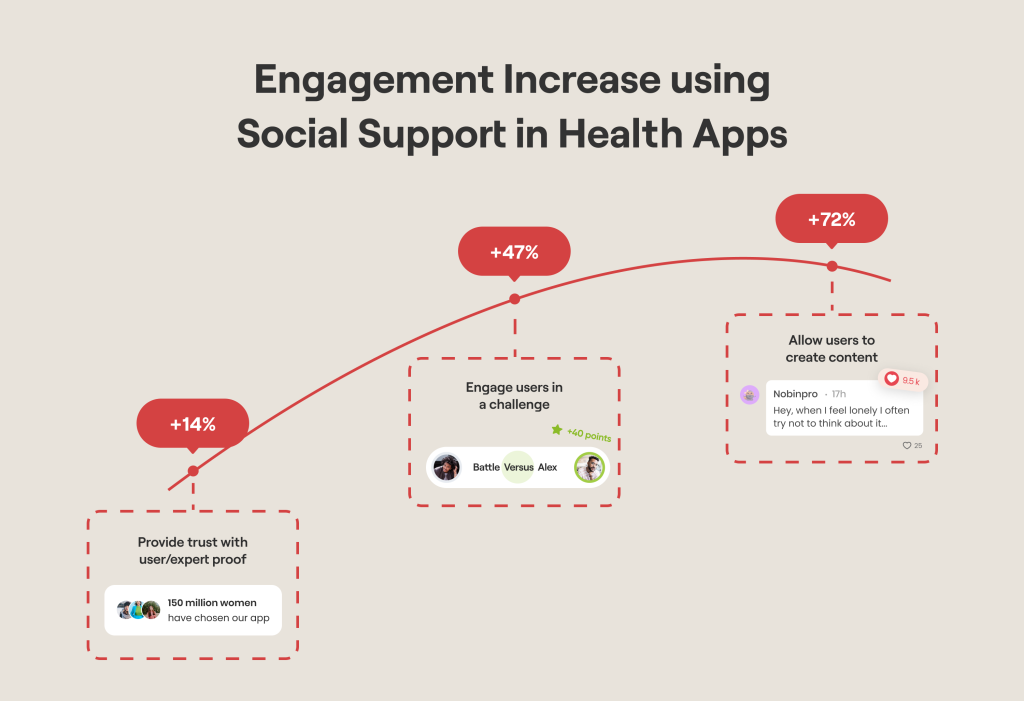
However, it’s crucial to tailor social support features to the specific needs and preferences of users, taking into account factors such as personality type and stigma associated with certain health conditions.
In general, we have written an entire article about social support in digital health apps here 🙂
Incorporating these straightforward engagement techniques into digital health interventions can help maximize user engagement and improve outcomes.
Whether it’s empowering users with autonomy, personalizing interventions to fit their needs, or leveraging the persuasive power of storytelling, these techniques offer effective strategies for promoting behavior change and improving health and well-being.
Who we are? We are a digital health product studio, who transforms healthcare digital experiences and sets new standards for delivering digital healthcare in a way that positively impacts people’s lives.
We assist healthcare startups in designing and developing digital products, while also helping healthcare organizations undergo transformative changes.
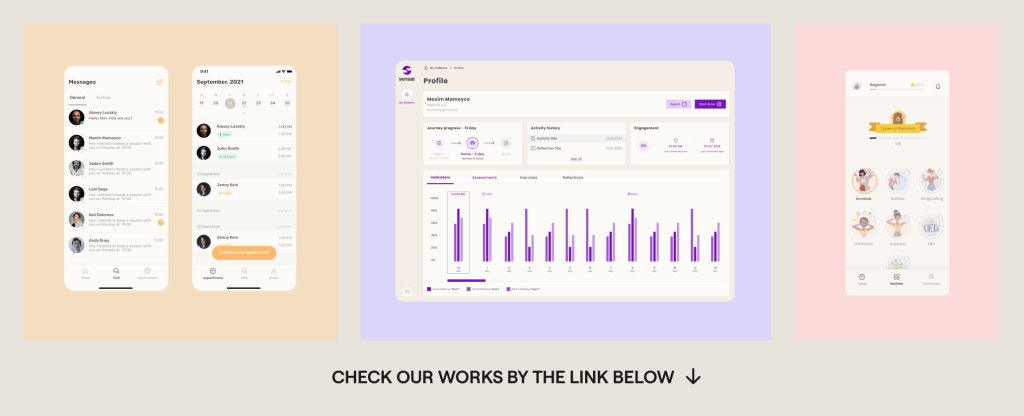
If you are interested about our experience check our portfolio with case studies: https://studio.nozomihealth.com/work
Or write to us now on m@nozomihealth.com and we will discuss how we can help ensure that your product brings real benefits




